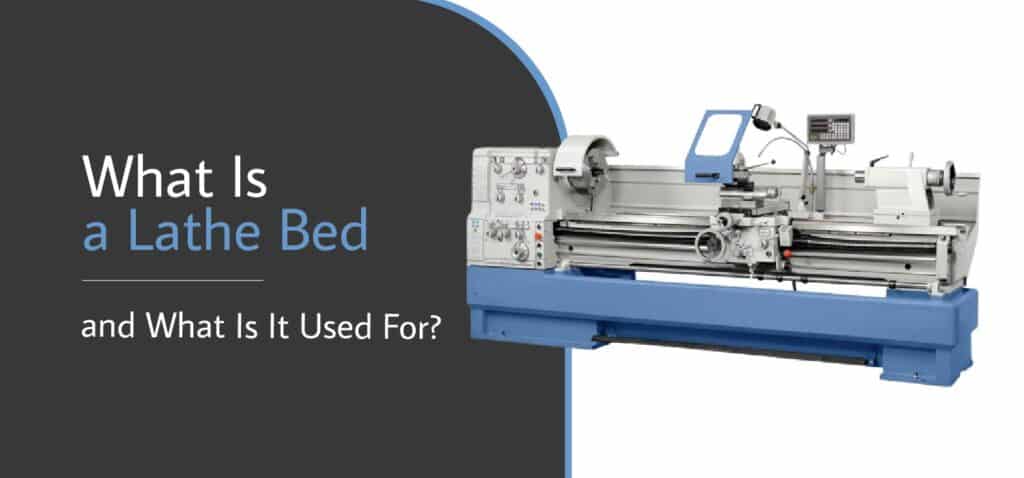Disclaimer: As an Amazon affiliate, I may earn a small percentage from qualifying purchases. This is at no extra cost to you. Learn more here.
Last Updated on December 20, 2022 by Charles Wilson
All lathes need a bed if you want to machine a workpiece properly. It is an anchored position where all the other lathe components are mounted.
This solid component is the foundation of your assembly and makes turning your workpiece easier.
I’ll cover this all-important part of the lathe machine here and a few different lathe bed varieties.
Key Takeaways
- Almost all lathes will have a lathe bed.
- The carriage, headstock, and tailstock are mounted along the length of this surface.
- Tool rests and the lead screw are also secured to this surface.
- This foundation also has steady rests and carriage stops along its length.
What Is a Lathe Bed Used For?

The main purpose of a lathe bed is to make machine operations easier by providing a steady foundation for the workpiece to be machined on.
Most lathe designs incorporate a lathe bed for stability. All the movable portions of a lathe, like a tailstock and a carriage, swing across this surface as needed.
The accurate measurements of a lathe bed will help ensure that all of your workpieces are machined properly.
What’s a Lathe Bed?
A lathe bed is a flat horizontal surface that forms the lathe’s primary work surface and frame. Almost all lathes have a bed, whether they’re metal lathes or wood lathe.
The headstock, tail stock, and carriage are all affixed to the bed’s rails. The carriage and tailstock are meant to slide along these rails during machining operations.
Your lathe’s carriage is moved using the rack, which runs along the distance of the lathe bed. The rack is either powered by the feed rod or a motor.
The headstock is secured in a single position at the left point of the bed and cannot slide or swing away.
Other Parts
Apart from the previously-mentioned components, the bed contains parts like the lead screw and its threaded rod.
The lead screw is a threaded rod that powers your carriage if you need to do some threading. Don’t forget to engage the half-nut lever first!
What’s a Lathe Bed Made Of?

This flat, hardened surface is often made of close-grained or high-quality cast iron or mild steel.
It must be made from cast iron to withstand vibrations and provide rigidity to the assembly.
Without this rigidity, the vibrations that run through most lathes during operation can cause chatter, which can introduce unevenness and imperfections in a machined workpiece.
What Is a Gap Bed Lathe?
You’ll need a gap-bed lathe if you have a particularly large workpiece that you can’t machine normally.
Some lathes have beds that can swing outwards, leaving a slight gap near the headstock.
The gap feature lets you work on larger workpieces that normally wouldn’t fit on your assembly.
Frequently Asked Questions (FAQs)
If you’ve questions about lathes, swing by this section for my answers!
What Is a Carriage?
A lathe’s carriage is a large component consisting of the apron, cross slide, and saddle. The saddle helps the cross slide move along the length of the lathe.
The carriage is in the lathe’s center, in between the head and tailstock. It slides along the assembly as needed and holds various cutting tools.
If your cross slide’s power feed isn’t doing the job, you can also move the tool manually.
Final Thoughts
Almost all lathes feature beds because the bed makes stable and safe operations possible.
It’s the backbone of your assembly and carries all other tools along the distance of its rails. Before you can measure or turn a workpiece, you’ll need a lathe bed first.
Remember to clean your lathes regularly to keep them in service for longer. I’ve found that a bit of regular maintenance goes a long distance!

